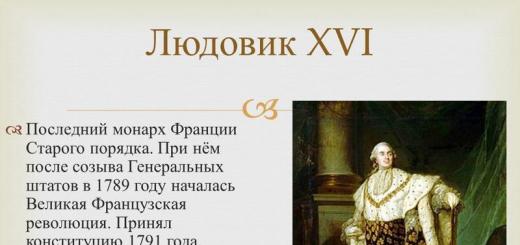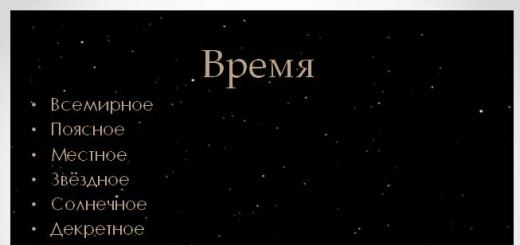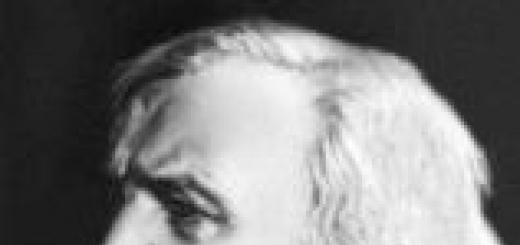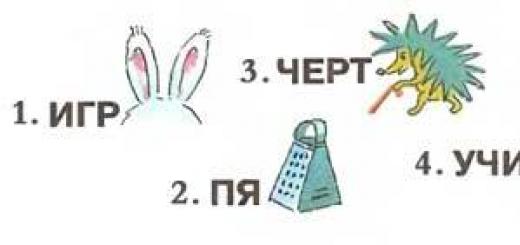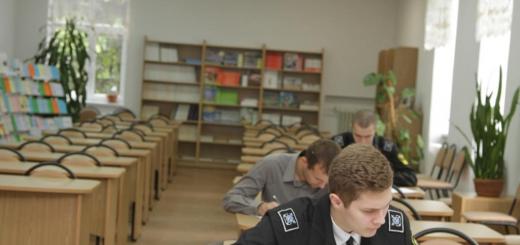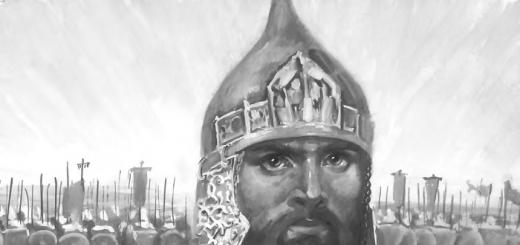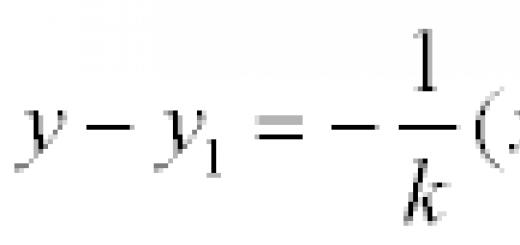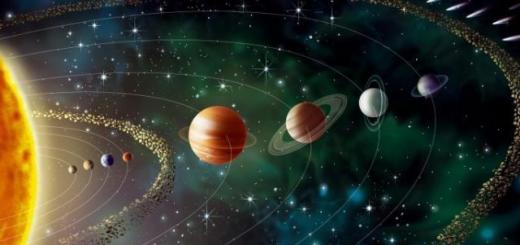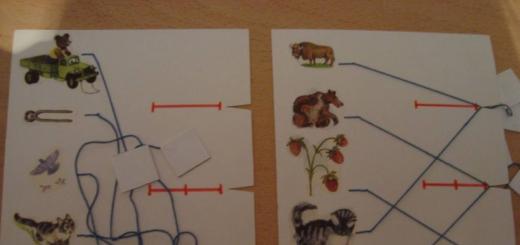Slide 1
Measuring time
Slide 2

Time
World Zone Local Stellar Solar Maternity Summer
Slide 3

World Time
The rotation of the Earth around its axis sets the universal time scale. The rotation of the Earth and the cycle of day and night determine the most natural unit of time - the day. A day is the period of time between successive upper culminations on a given meridian of one of three fixed points on the celestial sphere: the vernal equinox, the center of the visible disk of the Sun (the true Sun), or a fictitious point moving uniformly along the equator and called the “mean sun.” In accordance with this, there are sidereal, true solar or average solar days. The prime meridian for all time measurements since 1884 is considered to be the meridian of the Greenwich Observatory, and the mean solar time at the Greenwich meridian is called UT (Universal Time). Universal time is determined from astronomical observations, which are carried out by special services at many observatories around the world.
Slide 4

In the astronomical calendar for a month, the moments of phenomena are given according to universal time To. The transition from one time counting system to another is carried out according to the formulas: To=Tm - L, Tп=To+n(h)=Tm+n(h) - L. In these formulas To is universal time; Tm - local mean solar time; Tp - standard time; n(h) - time zone number (in Russia, another 1 hour of maternity time is added to the time zone number); L is geographic longitude in time units, considered positive east of Greenwich.
About counting time for observations
Slide 5

Sidereal time
For astronomical observations, sidereal time s is used, which is related to the mean solar time Tm and to universal time To by the following relations: S=So+To+L+ 9.86c * (To), S=So+Tm+ 9.86c * (Tm -L ), Here So is sidereal time at Greenwich Mean Midnight (sidereal time on the Greenwich meridian at 0 universal time hours), and the values (To) and (Tm -L) enclosed in brackets are expressed in hours and decimals of an hour. Since the products 9.86c * (To) and 9.86c * (Tm -L) do not exceed four minutes, they can be neglected in approximate calculations.
Slide 6

Moscow standard time
The standard time of the second time zone in which Moscow is located is called Moscow time and is designated Tm. The standard time of other points on the territory of the Russian Federation is obtained by adding to Moscow time an integer number of hours deltaT, which is equal to the difference between the time zone numbers of this point and the time zone of Moscow: T = Tm + deltaT.
Slide 7

Summer time
In the spring-summer period, summer time is introduced in a significant part of Russia and other countries, i.e., all clocks are moved forward one hour. The transfer is carried out at two o'clock in the morning on the last Sunday in March. At the beginning of the autumn-winter period, at three o'clock in the morning on the last Sunday in October, the clocks are again set back one hour: winter time is introduced. Thus, in the spring-summer period Tm=To+4h and T=Tm-L+4H+deltaT, in the autumn-winter period Tm=To+3h and T=Tm-L+ZCh+deltaT.
Slide 8

From the history of time measurement
The day is divided into 24 hours, each hour is divided into 60 minutes. Thousands of years ago, people noticed that many things in nature repeat themselves: the Sun rises in the east and sets in the west, summer gives way to winter and vice versa. It was then that the first units of time arose - day, month and year.
Using simple astronomical instruments, it was established that there are about 360 days in a year, and in approximately 30 days the silhouette of the Moon goes through a cycle from one full moon to the next. Therefore, the Chaldean sages adopted the sexagesimal number system as a basis: the day was divided into 12 night and 12 day hours, the circle - into 360 degrees. Every hour and every degree was divided into 60 minutes, and every minute into 60 seconds. However, subsequent more accurate measurements hopelessly spoiled this perfection. It turned out that the Earth makes a full revolution around the Sun in 365 days, 5 hours, 48 minutes and 46 seconds. The Moon takes from 29.25 to 29.85 days to go around the Earth.
Slide 9

Sidereal and solar days
Let's choose any star and fix its position in the sky. The star will appear in the same place in a day, more precisely in 23 hours and 56 minutes. A day measured relative to distant stars is called a sidereal day (to be very precise, a sidereal day is the period of time between two successive upper culminations of the vernal equinox). Where do the other 4 minutes go? The fact is that due to the movement of the Earth around the Sun, for an observer on Earth, it shifts against the background of stars by 1° per day. To “catch up” with him, the Earth needs these 4 minutes. The days associated with the apparent movement of the Sun around the Earth are called solar days. They begin at the moment of the lower culmination of the Sun on a given meridian (i.e. at midnight). Solar days are not the same - due to the eccentricity of the earth's orbit, in the winter in the northern hemisphere the day lasts a little longer than in the summer, and in the southern hemisphere it is the other way around. In addition, the plane of the ecliptic is inclined to the plane of the earth's equator. Therefore, an average solar day of 24 hours was introduced.
Slide 10

Due to the movement of the Earth around the Sun, it shifts for an observer on Earth against the background of stars by 1° per day. 4 minutes pass before the Earth “catches up” with him. So, the Earth makes one revolution around its axis in 23 hours 56 minutes. 24 hours – the average solar day – is the time the Earth rotates relative to the center of the Sun.
Slide 11

Prime Meridian
The Prime Meridian passes through the Greenwich Observatory, located near London. A person lives and works by a sundial. On the other hand, astronomers need sidereal time to organize observations. Each locality has its own solar and sidereal time. In cities located on the same meridian, it is the same, but when moving along the parallel it will change. Local time is convenient for everyday life - it is associated with the alternation of day and night in a given area. However, many services, such as transport, must operate at the same time; So, all trains in Russia run according to Moscow time. To ensure that individual settlements do not end up in two time zones at once, the boundaries between the zones have been shifted slightly: they are drawn along the borders of states and regions.
Slide 12

To avoid confusion, the concept of Greenwich Time (UT) was introduced: this is the local time on the prime meridian on which the Greenwich Observatory is located. But it is inconvenient for Russians to live on the same time as Londoners; This is how the idea of standard time came about. 24 earth meridians were selected (every 15 degrees). At each of these meridians, time differs from universal time by an integer number of hours, and the minutes and seconds coincide with Greenwich Mean Time. From each of these meridians we measured 7.5° in both directions and drew the boundaries of time zones. Within time zones, time is the same everywhere. In our country, standard time was introduced on July 1, 1919.
In 1930, all clocks in the former Soviet Union were moved forward an hour. This is how maternity time appeared. And in March, Russians move their clocks forward another hour (i.e., already 2 hours compared to standard time) and live according to summer time until the end of October. This practice is accepted in many European countries.
Standard Time
http://24timezones.com/map_ru.htm
Slide 13

Date line
Returning from the first circumnavigation of the world, Ferdinand Magellan's expedition found out that a whole day had been lost somewhere: according to ship time, it was Wednesday, and the local residents, one and all, claimed that it was already Thursday. There is no mistake in this - the travelers sailed all the time to the west, catching up with the Sun, and, as a result, saved 24 hours. A similar story happened with Russian explorers who met the British and French in Alaska. To solve this problem, the International Date Line agreement was adopted. It passes through the Bering Strait along the 180th meridian. On Kruzenshtern Island, which lies to the east, according to the calendar, one day less than on Rotmanov Island, which lies to the west of this line.
Slide 14

Quiz questions
http://www.eduhmao.ru/info/1/3808/34844/ http://www.afportal.ru/astro/test
Slide 15

1. The sidereal day, in contrast to the true solar day, has a constant duration. Why are they not used in public life?
Because: 1) it is more convenient to measure time using the movement across the sky of the most noticeable celestial body - the Sun, and not the vernal equinox point, which is not marked by anything in the sky; 2) using sidereal time in a year would result in 366 sidereal days with 365 quite noticeable days; 3) the sidereal day begins, at least at a given time, at different hours of the day and night; 4) when using any solar day, we can, to some extent, orient ourselves in time by the position of the Sun in the sky, but when using sidereal days, such orientation would be quite difficult and completely impossible for people new to astronomy.
Slide 16

2. Why don’t people use solar time in everyday life now?
Because the duration of the true solar day continuously changes throughout the year, which could not be noticed in ancient times. It would be very difficult to make a clock that kept exactly true solar time, and, moreover, the interests of science and technology require the establishment of constant rather than variable units of time (in this case, the day).
Slide 17

3. When in the year are there the longest and shortest true solar days? What is the difference between both?
The longest true solar day occurs around December 23 - 24 hours 04 minutes 27 seconds, and the shortest - around September 16 - 24 hours 03 minutes 36 seconds. The difference between them is about 51 sidereal seconds.
Slide 18

4. It is usually believed that along the entire length of any meridian, from pole to pole, there is the same hour of the day and that when moving along the meridian there is no need to rearrange the clock hands. Tell me, is this really so?
No. Quite often the same meridian passes through different time zones. However, local sidereal time and local mean solar time are the same throughout the entire length of any one meridian.
Slide 19

5. Assuming that the time for telephone conversations begins at 8 o'clock. and ends at 11 p.m. Standard time abroad and maternity time here, find the hours of the day convenient for telephone calls between London and New York using London standard time; between Moscow and Vladivostok according to Moscow maternity time.
From 1pm to 11pm inclusive London Standard Time. From 8 a.m. to 4 p.m. inclusive, Moscow maternity time.
Slide 20

6. The steamer left San Francisco on August 1 at 12 noon. And arrived in Vladivostok also at 12 noon. August 18. How many days did this flight last?
16 days
7. At what time, Moscow maternity time, does the New Year enter Russia?
At 2 p.m.
8. How long does any date, such as January 1, last on Earth?
Any calendar date is held on the globe for two days.
Slide 21

9. Having learned that each date is delayed on Earth for two days, one student protested: “Excuse me, but then all our years would last for two years. That means something is wrong here.” What would you answer to this student?
In every place on Earth, any calendar date “lives” for only one day, and therefore the year has its usual duration.
It is customary to distinguish between sidereal time, solar time (true and mean), local time, zone time, universal time (world time), and summer time.
Zvezdnoe time (sidereal day) is the period of time between two subsequent culminations of a star. Climax is the greatest height of the luminary above the horizon.
True solar time - this is the period of time between two successive culminations of the center of the Sun on the same meridian. However, this time is inconvenient, because... The length of the true solar day varies throughout the year due to the uneven movement of the Earth around the Sun (at perihelion the Earth moves faster than at aphelion). For convenience, mean solar time is introduced. It is believed that the Sun moves uniformly in its orbit.
Mean solar time - this is the period of time between two successive culminations of the “average” Sun on the same meridian. Local time is time measured on one meridian. It will be the same for all points lying on this meridian. But it is also inconvenient, because... There are as many local time systems as there are meridians on Earth, i.e. countless. Therefore, since 1884, the zone system of time counting began to be used in many countries of the world. The surface of the Earth is conventionally divided by meridians into 24 time zones, 15 o each.
Standard Time – time within the same time zone. In each time zone, the clock is set according to the local time of the middle meridian. Thus, the time in neighboring zones will differ by 1 hour. The boundaries of the belts are drawn taking into account natural boundaries and administrative and economic boundaries. According to international agreement, the initial, zero (aka 24th) time zone is the zone in the middle of which the zero (Greenwich) meridian passes. The remaining belts in the direction to the east are given numbers from 1 to 23. Standard time in some time zones has a special name. Thus, the time of the zero zone is called Western European (London time), the time of the first zone is Central European (most of Europe and Africa live at this time), the second zone is Eastern European (Moscow time).
The territory of Russia is located in ten time zones (from 2 to 11 inclusive). Moscow is in the second time zone, and the entire western part of Russia, except for the Kaliningrad region, will be in the 2nd time zone. Time of the 2nd time zone, i.e. Moscow time has been introduced in most of the territory of the third time zone, including the Nizhny Novgorod region. In the Kaliningrad region, the time is in the 1st time zone.
Zero time zone time, i.e. local mean solar time at the prime meridian is called universal time. In astronomical calendars, the moments of most astronomical phenomena are indicated in universal time. There is a formula for connecting universal time with zone time: T P = T V + n, where T p – standard time, T in – universal time, p – time zone number.
In 1930, in order to more rationally use daylight, maternity time was introduced in the USSR, according to which the clock hands in all time zones of the USSR were moved forward 1 hour. Since 1981, during the summer period in our country, clocks have been moved forward one more hour (summer time). The USA, Canada, Australia, and most European countries also switch to summer time. In total there are more than 110 states. However, the majority (about 130) countries do not manipulate time now. Among such states are China, Japan, Korea, the Baltic states, Scandinavia, etc.
Moscow time (corresponding to the 2nd time zone) differs from universal time in winter by 3 hours, and in summer by 4 hours.
With the introduction of standard time, the question arises: which time zone is considered the beginning of a new day? We agreed that the day should begin in the 12th time zone, through which the 180 o meridian passes. The date line is drawn along the meridian of 180° longitude. On both sides of this line, the hours and minutes are the same, and the calendar dates differ by one day. If they move from west to east, they live on the same number twice; in the opposite direction, one day is discarded from the count.
Calendar – a system for noting long periods of time, based on the periodicity of certain natural phenomena (change of seasons, phases of the moon, etc.). In the history of mankind, 3 types of calendars are known: lunar, solar, lunisolar. The birthplace of the lunar calendar is Babylon. The year in the lunar calendar consisted of 12 lunar months of 29 or 30 days. The Muslim lunar calendar currently exists in a number of Arab countries. The lunar year is 10 days shorter than the solar year.
More advanced are lunisolar calendars, in which the lunar months are approximately consistent with the solar year. The year is divided into 12 months, each of which begins with a new moon. To connect with the solar year, an additional 13th month was periodically inserted. This system is still preserved in the Jewish calendar.
The first solar calendar appeared in Ancient Egypt BC. The year there was divided into 12 months of 30 days. At the end of the year, another 5 days were added - thus, the year turned out to be 365 days. The modern solar calendar dates back to the ancient Romans. The Roman statesman Julius Caesar proposed to count 3 years as 365 days, and every fourth year as 366 days. This calendar is called the Julian calendar. Years with 365 days are called simple years, and years with 366 days are called leap years. February has 29 days in a leap year and 28 days in a common year.
The Julian calendar was also inaccurate and became more and more late over time. Therefore, in the 16th century. The head of the Catholic Church, Pope Gregory XIII, eliminated this inaccuracy. According to his proposal, “century years” ending in two zeros are leap years if they are divisible by 400. Therefore, 1600-1 is a leap year, 1700, 1800, 1900 are simple, and 2000 The th year is a leap year again. This system became known as the Gregorian calendar, or new style. This calendar has been introduced in most European countries. In our country, they switched to a new style only in 1918 (by this year the discrepancy between the Julian and Gregorian calendars was 13 days, so instead of February 1, 1918, they began to count February 14, 1918).
Sections: Physics
The purpose of the lesson:
- Further formation of the concept of time, units of time;
- consider different types of watches;
- formation of measurement skills (in particular the ability to use a stopwatch), the ability to formulate a conclusion based on the experimental data obtained.
Lesson type: combined
Equipment: multimedia projector, computer.
A physical quantity—time—helps us build our daily routine, determine the duration of lessons and breaks. And the very first measuring instrument that you first encountered in your life is an ordinary watch - a device for measuring time. serves. With the help of a clock we can determine whether a particular process is proceeding quickly or slowly.
Five and a half thousand years passed from the invention of the first clock (sun clock) to the creation of the most complex atomic clocks. At different stages of its development, humanity invented and used different types of watches.
The watch uses constant periodic processes:
- rotation of the Earth (sundial),
- pendulum oscillations (mechanical and electromagnetic clocks),
- vibrations of a tuning fork (tuning fork clock),
- vibrations of a quartz plate (quartz watch),
- the transition of atoms from one energy state to another (quantum clock).
Clocks are conventionally divided into household ones (wrist, pocket, table, wall, etc.) and special ones (for example, stopwatches, chronometers).
As a result of observing the rotation of the Earth, the sundial was invented. Annex 1 .
A SUNDIAL consists of a dial and a rod, the shadow of which, moving across the dial due to the movement of the Sun across the sky, shows the true solar time.
By the way, have you ever wondered why the hands on a regular clock go from left to right? The clock runs clockwise - from left to right - because this is the direction in which the sun's shadow moves. Therefore, modern watches adopted this movement from their ancestors.
Now, if the sun clock and then the mechanical clock had been invented in the Southern Hemisphere, everything would have been the other way around!
In the 2nd millennium BC. e. a water clock appeared. The clepsydra is the oldest clock.
A hole is drilled in the bottom of a vessel with water into which a small diameter tube is inserted. Water slowly flows down it and falls into another vessel, the walls of which are marked with divisions. The role of the clock hand is played by the water level. The higher he rises, the more time has passed. Appendix 2.
The expression “your time is up”, “pouring water in vain” came to us from the life of Ancient Rome, where water clocks were used at court hearings or at public meetings. With their help, they ensured that the speaker did not exceed the time allotted for his speech.
A little later an hourglass appeared. The simplest device for keeping time; 2 vessels connected by a narrow neck (one partially filled with sand). The time it takes for sand to be poured through the neck into another vessel can range from several hours to several seconds.
Today, there are clocks not only in every home, but also in almost every person. According to the principle of operation, they are divided into electronic and mechanical. The most accurate clocks, which are the standard of time, are atomic.
The operation of the clock is based on periodically repeating processes. For example, the operating principle of an hourglass is based on the fact that sand flows through a small hole over a certain period of time. This means that you can calculate the amount of sand that will seep through the hole in 5, 10 minutes.
The operation of mechanical wrist and wall clocks is based on periodically repeating oscillations of a pendulum
The most famous and largest clock in our country is the Kremlin chimes on Red Square in Moscow.
The largest mechanical clock in the world, which is still wound only by hand, is the clock on the Big Ben tower in London.
Physical education "Watch"
The mouse climbed for the first time
See what time it is.
Suddenly the clock said: “Bang!”
(One clap overhead).The mouse rolled head over heels.
(Hands “roll” to the floor).The mouse climbed in a second time
See what time it is.
Suddenly the clock said: “Bom, bom!”
(Two claps).The mouse rolled head over heels.
The mouse climbed for the third time
See what time it is.
Suddenly the clock said: “Bom, bom, bom!”
(Three claps).
How is time measured?
Perform a task.
Determine how long the change lasts. Express the result in seconds, minutes, hours.
Time. The concept of time is far more complex than length. If the concept of length has been established since ancient times, then the interpretation of time was constantly transformed with its ever new properties. Aristotle considered time a “number of motion,” and Gottfried Wilhelm Leibniz (1646–1716), a physicist, idealist philosopher, mathematician, inventor, lawyer, historian and philologist, believed that time is an abstraction of the relationships of all sequences. “You cannot step into the same river twice” can undoubtedly be attributed to the concept of time. The fact is that the length standard can be used repeatedly, at your discretion, by applying the ruler to the object being measured the required number of times. The time reference can only be used once, requiring only repeatable, periodic processes to be used. The first attempts to introduce a time standard were associated with obvious periodic processes. In Mesopotamia and Ancient China, almost simultaneously, they noticed that the Moon shows its face at certain intervals. Lunar calendars arose. It turned out that the phases of the moon did not coincide with the length of the year; days had to be added at the end of the year. Lunar calendars were replaced by solar calendars, and the concept of average daily solar time was introduced. 1/86400 of the average solar day was taken as the time standard. Time calculated in this way is called universal time. Everything would be fine, but it turned out that the Earth, strictly speaking, does not rotate around its own axis quite uniformly, hence it turned out to be impossible to ensure an accuracy of more than 10–8. In many scientific, technological and transport processes, stricter synchronization was required. By analogy with length, to increase the accuracy of time measurements, we took advantage of the periodicity of processes at the atomic level. The duration of 9,192,631,770 periods of atomic vibrations of 133 cesium isotopes began to be used as one of the most accurate time standards. The use of an atomic time standard made it possible to compare the duration of individual events with an accuracy of 10–12. Atomic clocks are “wrong” by 1 s every 30 thousand years. We went even further, discovering that the radiation of hydrogen lasers is even more stable, which makes it possible to increase the accuracy in comparison with the atomic standard by another two orders of magnitude.
Currently, in different areas of human knowledge, several time scales are used, which are best suited for calculating specific processes.
Ephemeral time. Used as an independent variable when describing the movement of bodies of cosmic origin.
Sidereal time. Used in astronomy and astrophysics. The characteristic period is the time of one complete revolution of the Earth around its axis, relative to the system of fixed stars.
Sunny time. The change in the hour angle of the Sun is taken as a characteristic value. There are true and average solar time, depending on the chosen method of counting, according to the true or average position of the luminary.
Universal time. The mean solar time of the prime meridian, which is conventionally taken to be the meridian of the Greenwich Observatory.
Local time. It is determined in accordance with the geographic longitude of the area and is the same for all points on the same meridian.
Standard time. Mean solar time determined for the 24 main geographic meridians, separated from each other at an angular distance of 150 in longitude. The surface of our planet is divided into 24 time zones, within each of which the standard time coincides with the time the main meridian passes through them.
Maternity time. Implemented by government regulations. Maternity time is calculated by adding one hour in summer and subtracting an hour in winter. The clock hands are moved by 1 hour on the night from the last Saturday to Sunday in March and September. This change in time allows you to optimize economic activities in relation to daylight hours. Everyone knows that a year is represented as a period of time equal, to a first approximation, to the period of revolution of the Earth around the Sun. Since different elementary time periods are used as a standard, there are different definitions of the length of the year.
Sidereal year. This period of time corresponds to one apparent revolution of the Sun across the celestial sphere relative to the fixed stars. The duration of such a year is 365.2564 average solar days.
Tropical year. The time interval between two successive passages of the center of the true Sun through the vernal equinox. The tropical year has a duration of 365.2422 average solar days.
An anomalous year. The duration of such a year is equal to the time between two successive passages of the center of the Sun through the perigee of its apparent geocentric orbit. The anomalistic year consists of 365.2596 average solar days.
Draconian year. The time interval between two successive passages of the Sun through the same node of the Moon's orbit on the ecliptic. The Draconian year consists of 346.62 average solar days.
Lunar year. Twelve synodic months include 354.3671 average solar days.
Julian calendar year (old style). Consists of 365.25 average solar days.
Gregorian calendar year (new style). Includes 365.2425 average solar days.
The length of a month, formally constituting 1/12 of the length of a year, is taken to be a time period close to the period of the Moon’s revolution around the Earth. It is customary to classify months as follows.
WITH inodic month. It is calculated as a period of time corresponding to the period of changing phases of the Moon. Corresponds to 29.5306 average solar days.
Sidereal month. The time of a complete revolution of the Moon around the Earth relative to the stars, which is 27.5306 average solar days.
Calendar month. It does not depend on the phases of the Moon and includes from 28 to 31 days. As a day, the concept of ephemeral, solar and sidereal days is most often used.
Ephemeral days consist of 24 hours, which is equal to 1440 minutes or 86400 seconds.
Sunny days. Equal to the period of revolution of the Earth relative to the Sun. The duration of a solar day is from 24 hours 0.3 minutes 36 seconds to 24 hours 04 minutes 27 seconds of sidereal time.
Sidereal day (sidereal). The period of rotation of the Earth around its axis relative to the stars is taken as a standard. The sidereal day consists of 23 hours 56 minutes 040905 from mean solar time.
Hours, minutes and seconds are obtained arithmetically by simply dividing the length of the day. An hour is equal to a period of time corresponding to 1/24 of a day. The sixtieth part of an hour is taken as a minute consisting of 60 s. However, let us recall that the countdown begins from the original standard? seconds, equal to 9,192,631,770 periods of cesium-133 radiation, corresponding to the transition of an atom between two hyperfine energy levels.
Laboratory work No. 3. Measuring time
Topic: Measuring time.
Goals: become familiar with the principle of operation of a metronome and stopwatch; learn to measure time intervals using various physical instruments.
Equipment: metronome, stopwatch, watch with a second hand, glass tube 25-30 cm long and 7-8 mm in diameter, plasticine.
Theoretical information
A metronome (Fig. I) (from the Greek words metron - “measure” and nomos - “law”) is a device for counting periods of time by ear. It is used to maintain precise tempo when performing musical works, as well as in laboratory experiments. The metronome consists of a pyramidal body with a scale (I), a spring clock mechanism and a pendulum (2) with a movable weight (3).
The oscillations of the metronome pendulum are accompanied by uniform tapping. The number of oscillations of a pendulum per unit time depends on the location of the load. To achieve the required number of beats per minute, the load is fixed opposite the corresponding number on the scale.
A mechanical stopwatch (Fig. 2) is a device for measuring periods of time lasting from fractions of a second to fractions of an hour. The stopwatch consists of a clock mechanism and a mechanism for controlling the hands - second (I) and minute (2), with the help of which the device is started, stopped and the hands return to the zero position.
Directions for use
Preparing for the experiment
1. Set the metronome to 120 beats per minute.
2. Determine the price of division of the clock and stopwatch scales. Enter the measurement results in the table. (On a metronome set to 120 beats per minute, the division value is 60 s: 120 = 0.5 s).
3. Cover one end of the glass tube with plasticine. Fill it with water until some air remains in the tube. Cover the other end of the tube with plasticine and place it on the table. Lightly tap the tube until the air bubble separates from the plasticine. Then lift one end of the tube and place it on a thin notebook. The bubble will begin to slowly move upward until it reaches the opposite end of the tube. To return the bubble to its original position, lift the end of the tube lying on the table.
Experiment
1. Check your “sense of time.” To do this, without using measuring instruments, estimate the time it takes for an air bubble to move from the end of the tube, which lies on the table, to the end of the tube, which lies on the notebook.
2. Measure the bubble travel time using:
a) hours; b) metronome; c) stopwatch.
Repeat each experiment three times. Immediately enter the results of all measurements into the table.
3. Complete the table.

Analysis of experimental results
1. After analyzing the experimental conditions, compare the results obtained and find out:
a) which of the proposed devices is more appropriate to use;
b) for what purpose each experiment was repeated three times;
c) what experimental conditions led to errors;
d) how the experimental technique can be improved.
2. Draw a conclusion indicating what you measured and what result you got.
Additional task
Determine one of the indicators of your heart activity - the number of pulse beats per minute. (For reference: for children aged 11–15 years at rest, the normal pulse rate is 70–80 beats per minute.)
Lesson summary
Thank students for their activity and offer to see the results of their work in class in a prepared presentation.
Thank you all very much for your work.
Information sources
- Pinsky A.A., Razumovsky V.G. Physics. Astronomy. 8th grade. – M., Education, 1998.
- Bludov M.I. Conversations on physics. – M., Education, 1984.
Measuring time in ancient times
Completed the presentation
student of grade 3 "B"
MBOU "Lyceum No. 56"
Kolobov Vladislav
Head Kladieva Elena Vasilievna


The first sundial appeared 5.5 thousand years ago. The clock consisted of a pointer that cast a shadow and played the role of an arrow, as well as a dial with divisions marked on it indicating the hours of the day. Moving the shadow arrow, reflecting the daily rotation of the Earth, allows you to determine the time.
But the operation of such watches was highly dependent on the weather, and they could only be used during daylight hours.

Time was measured by the amount of oil burned in a lamp or wax in a candle. They were very popular and the unit of time then became a candle. To the question “What time is it?” The answer was: “Two candles,” which corresponded to approximately three o’clock in the morning, since the whole night was divided into three candles. Such clocks were cheap and convenient, but inaccurate due to the different rates of oil and wax burning out of different lamps and candles.







Let's build a research plan that allows us to study the evolution of human ideas about time... Introduction. Why am I interested in this research? Ancient world. The emergence of concepts related to time. Antiquity. The concept of hours, minutes, seconds... The first hours. The beginning of understanding the properties of time. Nowadays. Modern chronometers. Time intervals in modern chronology. New knowledge about time. Problems of the future. Time Zones. Relativistic slowdown. Time machine?.. PRIMITIVE SOCIETY INTRODUCTION ANTIQUE OUR DAYS PROBLEMS OF THE FUTURE
Why this particular topic? Various clock mechanisms are constantly working near us: wall-mounted mechanical, electronic, portable devices with built-in clocks and mechanical wristwatches. The twelfth clock (electronic) works in our car. In addition, the clock is on some television channels. We have so many clocks that anyone can determine the current time within a few seconds. On the other hand, when we went on vacation to Altai, the situation was completely different: we left the house clock at home, the phones there were turned off (mobile communications did not work where we were), the car clock did not work either (the engine was turned off) . Only my father's wristwatch functioned. However, when I ran off to play football with friends, my dad wasn’t there, and I was late for dinner several times because I couldn’t tell the time. But how did people live when there were no clocks yet? Were they always late for everything? How were schools organized? If there is no clock, when should I ring the bell for recess? And then how can everyone get together for the next lesson at the same time? This study will help me answer these questions, and at the same time find out whether all the problems have been solved today, or whether some of the problems remain to be solved? PRIMITIVE SOCIETY INTRODUCTION ANTIQUE OUR DAYS PROBLEMS OF THE FUTURE

The first natural units of measurement were the day. INTRODUCTION ANTIQUE OUR DAYS PROBLEMS OF THE FUTURE People noticed that the Sun moves cyclically across the sky. The Sun rises in the morning, moves across the sky during the day, sets below the horizon in the evening, and is not visible at night. The Sun does not rise from the place where it set... The rhythms of biological activity of all animals and plants, i.e. h. and humans also have a daily cycle (i.e., the frequency of sleep and food for us is connected specifically with the day). The day was naturally divided into two parts by the moments of sunrise and sunset: day and night. In summer the day is longer than the night, in winter it is the opposite. But the length of the day is constant. PRIMITIVE SOCIETY

Years became the unit of measurement for long periods of time. INTRODUCTION ANTIQUE OUR DAYS PROBLEMS OF THE FUTURE People have noticed that from time to time there is a cyclical change of seasons (SPRING-SUMMER-AUTUMN-WINTER). Depending on the time of year, the temperature changed (colder in winter than in summer). The state of the environment changes (especially plants that lose their leaves in winter). The trajectory of the Sun also changes (the time of daylight and the height of the Sun above the horizon). In summer the day is longer than the night, in winter it is the opposite. But the length of the day is constant. People noticed that there are approximately 365 days in a year. (In fact, it is very difficult to measure the duration of one year without a clock. To do this, you need to measure the maximum height of the Sun every day for several years in a row, and then calculate the difference in days between the days where this height is maximum.) Very long intervals of time began to be measured in years ( for example, the lifetime of a person or the reign of a king). PRIMITIVE SOCIETY

In order to determine the length of the year, a special tool was invented - the gnomon. INTRODUCTION ANTIQUE OUR DAYS PROBLEMS OF THE FUTURE Let us recall that in order to measure the duration of one year without a clock, you need to have an instrument to measure the maximum height of the Sun. The gnomon allows you to determine: astronomical noon, the moment when the length of its shadow is shortest. direction north in the direction of the shadow at astronomical noon. the latitude of a place along the length of the shadow at astronomical noon. The accuracy of the gnomon is, in principle, low, since the Sun is not a point, but a disk, and it is impossible to use the gnomon to measure by stars. Gnomon from the Forbidden City (Beijing). PRIMITIVE SOCIETY

The third unit of time for the ancients was the month. INTRODUCTION ANTIQUE OUR DAYS PROBLEMS OF THE FUTURE People have noticed that from time to time, at night, the shape of the visible disk of the Moon changes (NEW MOON - FIRST QUARTER - FULL MOON - LAST QUARTER). The phases of the Moon are not directly related to the rhythms of living nature, but depending on the phases of the Moon, visibility at night changed. The period between two new moons is much easier to measure than a year. People have noticed that there are approximately days in a month, and a little more than 12 months in a year. People called a period of 7 days (approximately equal to the period between two adjacent phases of the Moon) a week. Average lengths of time began to be expressed in weeks and months (duration of agricultural work, intervals of travel, war, trade transactions). PRIMITIVE SOCIETY

Let's summarize the knowledge of the Ancient World: INTRODUCTION ANTIQUE OUR DAYS PROBLEMS OF THE FUTURE Day (frequency of changing the time of day). Cycle MORNING_DAY_EVENING_NIGHT. The day was divided into day and night by the moments of sunrise and sunset. It was difficult to make an appointment... (if only at sunrise or sunset). Year (frequency of changing seasons). Cycle SPRING-SUMMER-AUTUMN-WINTER. People noticed that there are approximately 365 days in a year. 1 year is very difficult to measure. It is convenient to measure only very long periods of time. The gnomon was invented to measure the year. Month (frequency of changing phases of the Moon). Cycle NEW MOON - FIRST QUARTER - FULL MOON - LAST QUARTER. Divided into weeks. People have noticed that there are approximately days in a month, and a little more than 12 months in a year. 1 month is easy to measure. Suitable for measuring long intervals. PRIMITIVE SOCIETY

So, people were faced with three problems of measuring time that had to be solved... INTRODUCTION ANTIQUE OUR DAYS PROBLEMS OF THE FUTURE Indivisibility of the day. In nature, there is no repeating cycle shorter in duration than the daily one (there were tides on the shores of the seas, but where there is no sea, it was impossible to use them. It was difficult to make an appointment... (unless only at sunrise or sunset). That is if a teacher in an ancient school wanted to gather everyone at the same time, he could only set such a time at the moment of dawn... Lack of a calendar. It is difficult to assign an event to a specific day after a long period of time. For example, inviting friends and relatives from other cities to your birthday. After all, you have to be a very devoted friend to count for the sake of someone when exactly 365 days have passed since the last holiday. Lack of watches. Even if you managed to arrange a meeting after work at the time of sunset, what to do if the Sun disappeared behind the clouds Some household appliance is needed to assess the present moment in time... PRIMITIVE SOCIETY

Soon people decided to divide each day into 12 parts. Thus the hour appeared. INTRODUCTION ANTIQUE OUR DAYS PROBLEMS OF THE FUTURE Clock. Historically, the basic unit for measuring short intervals of time was the day (often said “day”), equal to the period of revolution of the Earth on its axis. As a result of dividing the day into smaller time intervals of precise length, clocks arose. The origin of division is probably related to the duodecimal number system followed by the ancients. The day was divided into two equal consecutive intervals (conditionally day and night). Each of them was divided into 12 hours. With this division, an hour in Novosibirsk will be shorter than an hour in St. Petersburg in the summer, and on the contrary, longer in winter. In Murmansk (behind the Arctic Circle) in the summer the hour will be 2 times longer than usual, and in the winter its duration will drop to zero! Minutes and seconds. The division of the hour goes back to the sexagesimal number system. Each hour was divided into 60 minutes. Every minute for 60 seconds. In the Middle Ages, only astronomers divided hours into minutes for their needs. In everyday life, minutes did not matter. PRIMITIVE SOCIETY

Already in the 15th century. BC e. The Egyptians invent a sundial, realizing that the shadow moves during the day... INTRODUCTION ANTIQUE OUR DAYS PROBLEMS OF THE FUTURE The first known description of a sundial in Ancient Egypt is an inscription in the tomb of Seti I, dating back to the years. BC. Instruments made using this principle have also been found. One of them dates back to the reign of Thutmose III and dates back to the years. BC, the second from Sais, he is 500 years younger. Somewhat later (8th century BC), a similar mechanism is described in the Bible under the name “steps of Ahaz.” PRIMITIVE SOCIETY

Soon, it was possible to build a fairly accurate device, improving the ancient gnomon. ANCIENT WORLD INTRODUCTION ANTIQUE OUR DAYS PROBLEMS OF THE FUTURE The higher the gnomon, the longer the shadow it casts, the more accurate the measurements. There was only one mark on the dial - a straight line north of the pillar, where the shadow falls at noon. The gnomon screen can be divided into hours, but all hours of the day will have different durations, and, in addition, the duration of such an “hour” will also change from day to day. In order for the gnomon to always show the time correctly, it must be tilted in the direction of the earth's axis, i.e., towards the North Star. This improvement of the gnomon was undertaken by the Greek Anaximenes of Miletus, around 530 BC. e. built a sundial in the Spartan capital Lacedaemon. Since then, for more than 2 thousand years, this device has remained the main measure of time. Most often, it was installed either on a stand with a horizontal dial, or on the wall of a building - it was a vertical sundial. Usually only the hours were marked on the dial.

INTRODUCTION ANTIQUE OUR DAYS PROBLEMS OF THE FUTURE XVI century BC. e. "Sundial" III century BC. e. “Hourglass” IV century BC. e. “Water clock” of the 16th century. e. "Star Clock" of the 16th century. e. "Mechanical clock" 9th century AD e. “Fire clock” After the solar clock, other types of clock mechanisms soon appeared... PRIMITIVE SOCIETY

Different civilizations solved the problem with calendars in different ways... INTRODUCTION ANTIQUE OUR DAYS PROBLEMS OF THE FUTURE Solar. Solar year is the period between two summer solstices (i.e. 365 days). The inaccuracy is due to the fact that there are days in a year, leap years increase the accuracy (approximately 24 days in 100 years). Examples of such a calendar in ancient times: the Egyptian calendar (tied to the appearance of Sirius), the Mayan calendar. Modern examples: Gregorian and Julian calendars (the so-called new and old styles). Lunar. The lunar year is a period equal to 12 months (i.e. * 12 = 354 days). Tied to the phases of the moon. The inaccuracy is due to the fact that there are days in the lunar year. Leap years increase accuracy (about 11 days in 30 years). An example of such a calendar: the Muslim calendar. Lunar-solar. The lunisolar year is a period approximately equal to the solar year, consisting of intervals equal to lunar months. The duration is 354 days (regular year) or 384 (leap year). The inaccuracy is due to the ambiguity of the principle of adding a leap month. An example of such a calendar: the calendar in Israel. PRIMITIVE SOCIETY

When the main problems of everyday measurement of time were solved, it was time to think about the essence of time... INTRODUCTION ANTIQUE OUR DAYS PROBLEMS OF THE FUTURE PRIMITIVE SOCIETY The earliest statement in non-Eastern philosophy on the topic of time belongs to the ancient Egyptian thinker Ptahhotep (ca BC). He wrote: “Do not belittle the time of following desires, for wasting time is contrary to the spirit.” The Vedas, the earliest texts of Hinduism (c. 16th century BC onwards), describe a Hindu cosmology in which the universe experiences repeating cycles of creation, destruction and rebirth, each cycle lasting 4,320,000 years. In the introduction to the first book of the Mahabharata, Sanjaya says: “Being and non-being, happiness and unhappiness, all this has its root in time. Time leads to the maturity of beings, but time destroys them. Time again calms the time that burns creatures. It is time that changes all favorable and unfavorable feelings and thoughts in the world. Time destroys all beings and creates them again. Time passes uncontrollably in the same way for all creatures.” The Book of Ecclesiastes says: “To everything there is a season, and a time to every purpose under heaven: a time to be born, and a time to die; a time to plant, and a time to pluck up what is planted; a time to kill, and a time to heal; a time to destroy, and a time to build; a time to cry, and a time to laugh; a time to mourn, and a time to dance; a time to scatter stones, and a time to gather stones; a time to hug, and a time to avoid hugs; time to seek, and time to lose; a time to save, and a time to throw away; a time to rend, and a time to sew together; a time to be silent and a time to speak; a time to love and a time to hate; a time for war, and a time for peace."

The Greek philosopher Zeno forced people to think deeply about the nature of time... INTRODUCTION ANTIQUE PRESENT DAYS PROBLEMS OF THE FUTURE PRIMITIVE SOCIETY Let's say Achilles runs ten times faster than a tortoise and is behind it at a distance of a thousand steps. During the time it takes Achilles to run this distance, the tortoise will crawl a hundred steps in the same direction. When Achilles runs a hundred steps, the tortoise crawls another ten steps, and so on. The process will continue ad infinitum, Achilles will never catch up with the tortoise. To overcome a path, you must first overcome half the path, and to overcome half the path, you must first overcome half of the half, and so on ad infinitum. Therefore, the movement will never begin. A flying arrow is motionless, since at every moment of time it is at rest, and since it is at rest at every moment of time, it is always at rest. Zeno (V century BC) “I BET ON THE TURTLE” Aristotle (IV century BC) “I BET ON ACHILLES”

Even 150 years ago (by the middle of the 19th century), ideas about time were finally formed... INTRODUCTION ANTIQUE OUR DAYS PROBLEMS OF THE FUTURE PRIMITIVE SOCIETY TIME EXTENDS INFINITELY INTO THE PAST. People began to believe that the Universe and time in it always existed. TIME, UNLIKE MATTER, DOES NOT CONSISTE OF INDIVISIBLE PARTICLES. If matter is divided into atoms, then time can be divided endlessly. TIME FLOWS EVERYWHERE AT THE SAME SPEED. At least if the watch is accurate enough and the comparison method is correct. MARVELOUS! BUT NOW THE IMPLICATIONS ABOUT TIME ARE DIRECTLY OPPOSITE!

Now ideas about time have changed dramatically: INTRODUCTION ANTIQUE OUR DAYS PROBLEMS OF THE FUTURE PRIMITIVE SOCIETY TIME HAD A BEGINNING Edwin Hubble proved that the time scale had a beginning about years ago. TIME APPEARS TO CONSISTE OF INDIVISIBLE PARTICLES. From Max Planck's calculations it follows that there is a very small period of time, less than which it cannot be. It is called "Planck time". TIME FLOWS EVERYWHERE AT DIFFERENT SPEED. Albert Einstein showed that time flows differently for everyone. For example, for Achilles time flows somewhat slower than for the tortoise.


If we return to the level of an ordinary person, the following happened: INTRODUCTION ANTIQUE OUR DAYS PROBLEMS OF THE FUTURE PRIMITIVE SOCIETY THE WHOLE PLANET IS DIVIDED INTO TIME ZONES Previously, people traveled little and the time difference within the limits of travel could most often be neglected. Nowadays, due to the high speed of movement (for example, on an airplane), it is possible to move at the speed of the Earth’s rotation. To simplify relationships in such situations, the entire planet was divided into 24 time zones. Interestingly, because of this, the time difference between Chukotka (Russia) and Alaska (USA), located next door, is 24 hours (i.e. a whole day). At the same time, for various reasons, in some countries there is the concept of “summer time”, when the hands are moved forward an hour in the summer. Sometimes neighboring villages differ in time by 2 hours. UNprecedented ACCURACY OF MEASUREMENTS The stopwatch on a mobile phone takes into account time intervals of 0.1 seconds. In sports competitions, 0.01 seconds are taken into account. And in science and technology, accuracy is sometimes measured in fractions of a second, less than a second as much as a second is less than the age of the Universe... A COMPLETELY UNIVERSAL CALENDAR. The Gregorian calendar provides good accuracy for the solar year. At the same time, for various reasons, in some countries there is the concept of “summer time”, when the hands are moved forward an hour in the summer.

Over the next 50 years, humanity will finally be able to come up with a common calendar. INTRODUCTION ANTIQUE OUR DAYS PROBLEMS OF THE FUTURE PRIMITIVE SOCIETY THE MAIN PROBLEM OF THE CURRENT CALENDAR IS THE DISCOORDANCE OF THE NUMBERS OF THE MONTH AND THE DAYS OF THE WEEK. At the moment, several calendar reforms have been proposed to eliminate this shortcoming. Most of them assume a year of 364 days, equal to 4 quarters of 13 weeks each. At the same time, the 365th day of December 31 (in a leap year 2 days) is declared “Day of Peace and Friendship of Nations” and is taken outside the week. The main disadvantage of this project is that when it is introduced, uncertainty arises with religious holidays. Holidays are associated with the days of the week (for example, Friday in Islam, Saturday in Judaism and Sunday in Christianity), and moving a day outside of this week entails quite a few questions... With another option, there are only 364 days in a year, but once every 5- After 6 years, “Leap Week” is added. THE PROBLEM OF CLOCK ADJUSTMENT WILL FINALLY BE SOLVED.

In 100 years, with the help of time dilation, a person will fly to the stars... INTRODUCTION ANTIQUE PRESENT DAYS PROBLEMS OF THE FUTURE PRIMITIVE SOCIETY Let's consider a hypothetical flight to the Alpha Centauri star system, distant from Earth at a distance of 4.3 light years. Let the spaceship move half the way with an acceleration equal to the acceleration of free fall (then the cosmonauts will feel their usual earthly weight in space, and the second half it slows down with the same acceleration (for the astronauts the floor and ceiling will change places). Then the ship turns around and repeats the stages of acceleration and braking. In this situation, the flight time in the earth's reference frame will be approximately 12 years, while according to the clock on the ship, 7.3 years will pass. The maximum speed of the ship will reach 0.95 of the speed of light. Over 64 years of its own time, a spacecraft with unit acceleration can potentially can travel (returning to Earth) to the Andromeda Galaxy, 2.5 million light years away, about 5 million years will pass on Earth during such a flight.

And in 200 years a person will build the first time machine! INTRODUCTION ANTIQUE OUR DAYS PROBLEMS OF THE FUTURE PRIMITIVE SOCIETY Although we constantly travel to the future, no one has experience moving into the past. The idea of time travel originated in 19th-century science fiction literature. H.G. Wells's novel The Time Machine, published in 1895, became widely known. In the twentieth century, this idea was developed by many, but the most famous were Robert Zemeckis’ film trilogy “BACK TO THE FUTURE” and the Soviet film “GUEST FROM THE FUTURE”. Modern physics claims that travel in time, including into the past, is possible, but for this it is necessary, firstly, to move in space at a speed close to light, and secondly, it is necessary to either discover in space or artificially construct very exotic objects under called “wormholes”, thirdly, the time machine itself must be built using materials with a negative energy density, which is currently not observed in any of the known materials.

INTRODUCTION ANTIQUE OUR DAYS PROBLEMS OF THE FUTURE PRIMITIVE SOCIETY We saw how people moved from determining time by the position of the Sun and Moon to quartz and atomic clocks... We see that there is a clock for every apartment and even every room of this apartment... But we We also see that now there are still unresolved problems of time management that will have to be solved in the future... SO... We saw how people moved from determining time by the position of the Sun and Moon to quartz and atomic clocks... We see that there is a clock for every apartment and even every room of this apartment... But we also see that now there are still unresolved problems of time management that will have to be solved in the future...

